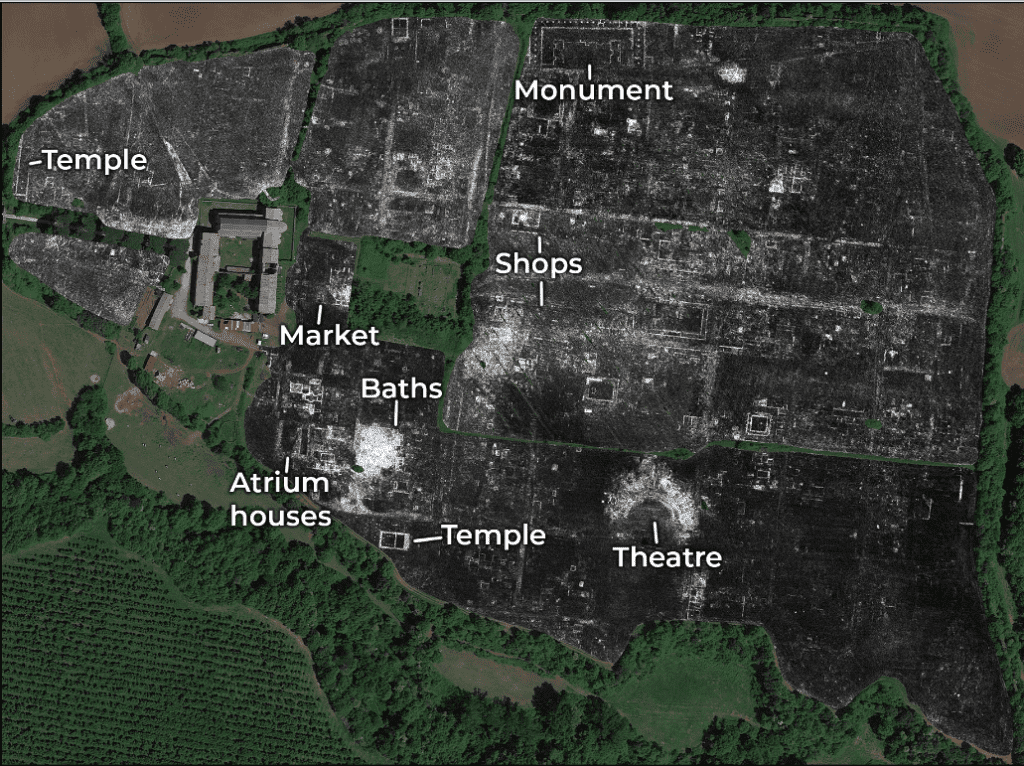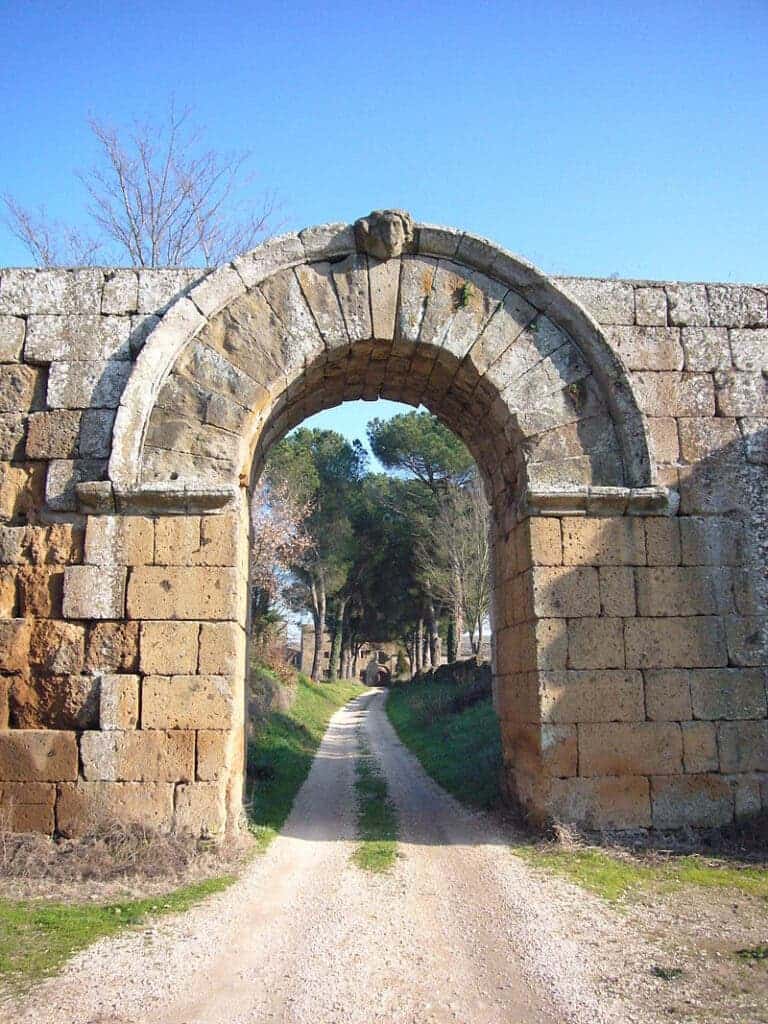Archaeologists revealed a vibrant Roman town in central Italy, complete with a market, temples, and even a pool. Except most of it is still underground and was brought to light using remote sensing tools.

Falerii Novi was a walled town in the Tiber River valley, about 50 km north of Rome. It was built by the Romans in 241 BC and served as a small and defensible town for some 2,500 inhabitants.
While some of its walls and building foundations are visible on the surface, much still remains hidden. The new study, published today in Antiquity, surveyed 30.5 hectares within the city’s walls, with one scan taken every 12.5 centimeters (about 0.4 feet).
The researchers used a method called Ground Penetrating Radar (or GPR for short). GPR is not a new method, and it has been used successfully multiple times in this type of archaeological study. The radar looks a bit like a lawn-mower. You push or pull it over the area you want to survey, and it sends an electromagnetic signal under the ground (much like a normal radar does). The signal is then reflected back to the antenna, and anything that has physical properties that contrast to the surrounding soil is highlighted — in this case, archaeological structures.
This method can reveal entire structures with relative ease, and it’s non-invasive. All you need is a flat surface to pull it over. To make things even quicker, the research team pulled the antenna with a quad bike (an ATV). They were able to survey the entire town, covering an area of 30.5 hectares (75 acres), revealing the buried features without having to dig once.

Corresponding author, Professor Martin Millett from the University of Cambridge’s Faculty of Classics, said:
“The astonishing level of detail which we have achieved at Falerii Novi, and the surprising features that GPR has revealed, suggest that this type of survey could transform the way archaeologists investigate urban sites, as total entities.”
Because the team was able to basically image the entire town, they were also able to analyze the urban design. For instance, in the southern parts of town, just within the city’s walls, GPR revealed a large rectangular building connected to a series of water pipes. The pipes lead to the aqueduct.
The researchers tracked these pipes across much of Falerii Novi, even beneath its city blocks, and not just along the streets. This led them to believe that the structure formed an open-air pool (a natatio), forming a part of a rather large bathing complex.

Even more surprisingly, near the city’s north gate, the team identified a pair of large structures within a covered passageway with central row of columns. The researchers mention this does not resemble any known structure in Roman architecture, but speculated that these were part of an impressive public monument, contributing to an intriguing sacred landscape on the city’s edge.
In fact, the entire city has a rather unexpected layout, being seemingly much less structured than other known Roman cities — yet featuring remarkably elaborate features that include a temple, market building, and bath complex.
Researchers are now keen to explore other large cities using this approach.
“It is exciting and now realistic to imagine GPR being used to survey a major city such as Miletus in Turkey, Nicopolis in Greece or Cyrene in Libya”, Millett said. “We still have so much to learn about Roman urban life and this technology should open up unprecedented opportunities for decades to come.”

Journal Reference: L. Verdonck, A. Launaro, F. Vermeulen & M. Millett, ‘Ground-penetrating radar survey at Falerii Novi: a new approach to the study of Roman cities’, (9 June 2020). DOI: 10.15184/aqy.2020.82









